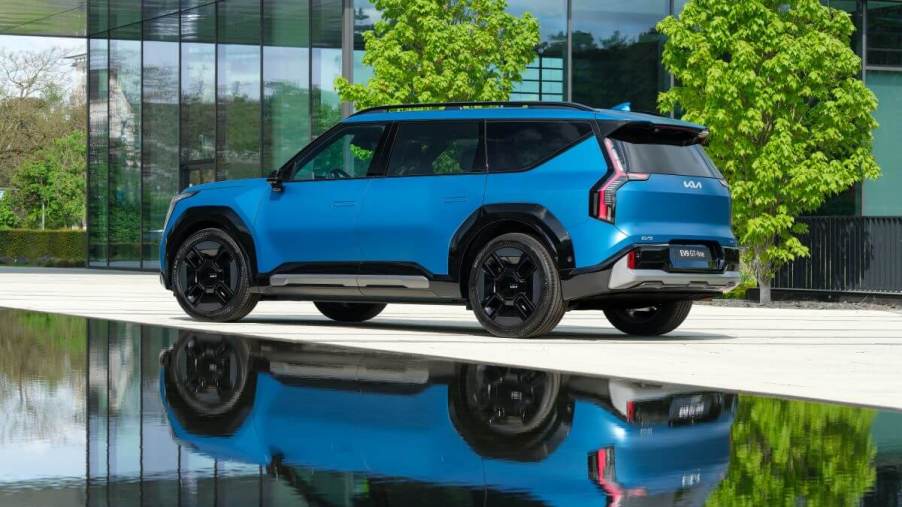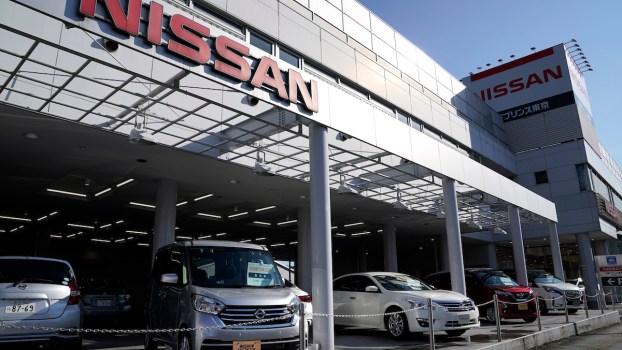
1980s Boxy Car Design is Back and Better Than Ever
Each generation of cars has its own distinct styling cues, but generalizing automotive design in the 1980s could be summed up well as “use a rectangular box as inspiration and try to make it interesting.” Or use the same inspiration and don’t make it interesting. The Hyundai Excel sedan, introduced in 1985, looked to have been designed with nothing more than a construction straight edge. The only curves on a Chevrolet Caprice from the 1980s were its wheels.
However, almost all fashion eventually comes back into style, and squared body panels and boxy automotive designs are back. You needn’t look further than a few recently launched models to see car design venturing back to the ‘80s for the modern auto industry.
Boxy car design is back
One of the more recent showpieces signaling the return of boxy design is the 2024 Hyundai Santa Fe. The current model isn’t devoid of sharp edges, but the next-gen model is almost bereft of curves. The blocky front, complete with a rectangular grille, lower intakes, and headlights, is merely the leading edge of an almost flat profile, roof, and rear fascia.
The Lexus GX has always had a boxy shape. Still, the completely redesigned 2024 model looks like someone crossbred a Land Rover Defender with the Scout SUV concept (another potential future model with a square design).
The Kia EV9 is a highly anticipated electric midsize three-row SUV, and to mark its debut, it’s been given a rugged-looking, square design.
Of course, plenty of models already on the road opt for hard edges in their design. Keeping with Kia, The Telluride has now been around half a decade. Almost the same can be said for the Rivian R1S. The Hyundai Ioniq 5’s styling looks like a rendering of “What will cars look like in the future” made in the 1980s — still boxy but with some nice styling flourishes.
These existing SUV and the upcoming models from Hyundai, Lexus, and Kia signal boxy styling is here to stay, at least for the immediate future. Who knew the Scion XB and Nissan Cube designs were so far ahead of their time?
Squared-off design — for looks and pragmaticism
If there’s one thing all the aforementioned modern models have in common, it’s that they are SUVs. The popularity of the segment underscores one of the reasons more squared-off designs are becoming more commonplace. A boxy design is far more practical. For firsthand evidence, get in the back seat of the traditionally shaped BMW X3 and then hop in the rear row of the “coupe” styled X4. Or try to fit a piece of furniture in the back of the X3 and then the X4. A boxier design opens the door for far more passenger and cargo space, two vital cornerstones of any commuter or family car, even if fuel efficiency usually suffers as a result.
That’s why boxy design has never gone out of style among SUVs. The Jeep Wrangler, Ford Bronco, Land Rover Range Rover/Defender, and Toyota 4Runner have been square as long they’ve been on the road.
So, is the boxy design of less rugged, off-road-oriented SUVs here to stay, or will we laugh at their styling the same way in which we now laugh at the Chrysler New Yorker of the ‘80s, which was so square that having a circular gas cap filler looks wildly out of place?
More importantly, can boxy styling last into the EV era?
The trouble in the air
The problem with some ultra-square SUVs is they tend to have the aerodynamic properties of a brick. That is to say, they aren’t particularly efficient at cutting through the atmosphere. That could present hurdles with the automotive industry’s transition to all-electric power.
Despite its mostly traditional shape, Mercedes-Benz highly touts the aerodynamic properties of its all-electric EQS SUV. For good reason — limiting drag is vital to extending the range of EVs.
Citroen CEO Vincent Cobee told Auto Express earlier this year that SUVs will die off as their overall shape and weight aren’t conducive to the kind of efficiency and range drivers desire in their all-electric vehicles. If that proves true, the current boxy design trend could be the style’s last hurrah.
Then again, solid-state batteries, improved charging rates, and the affordability of electricity over gasoline could mitigate the importance of aerodynamics in future electric vehicles. And if that’s the case, boxy designs could remain popular among mainstream SUVs for the long haul.




